#the grandassa models
Text
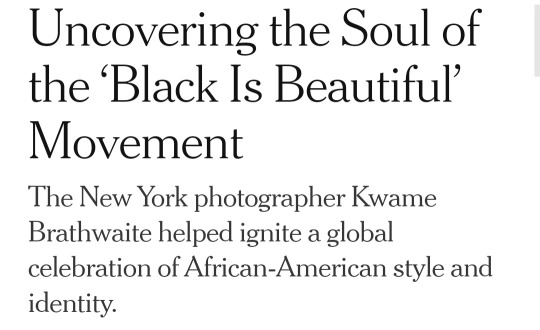
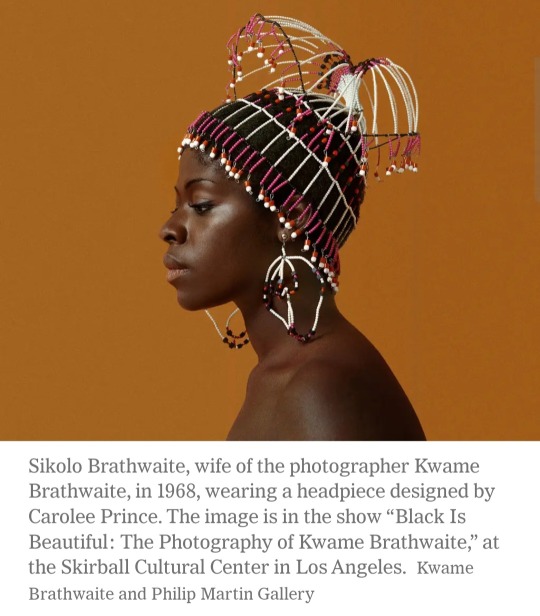

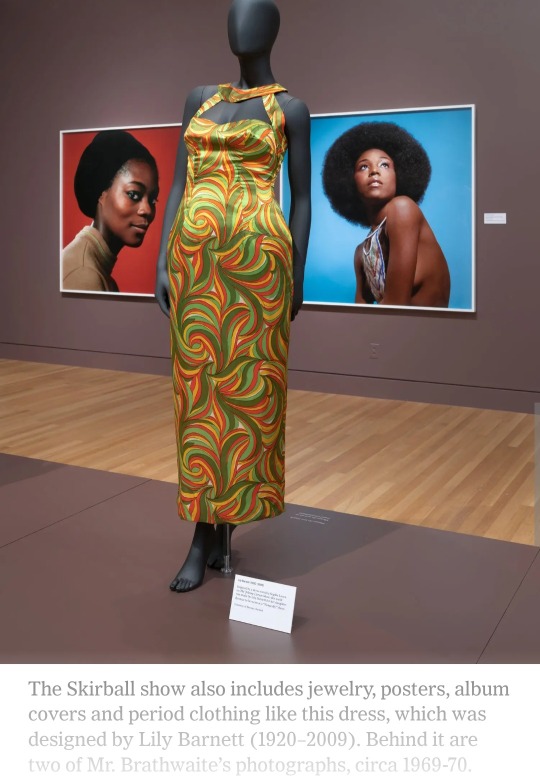


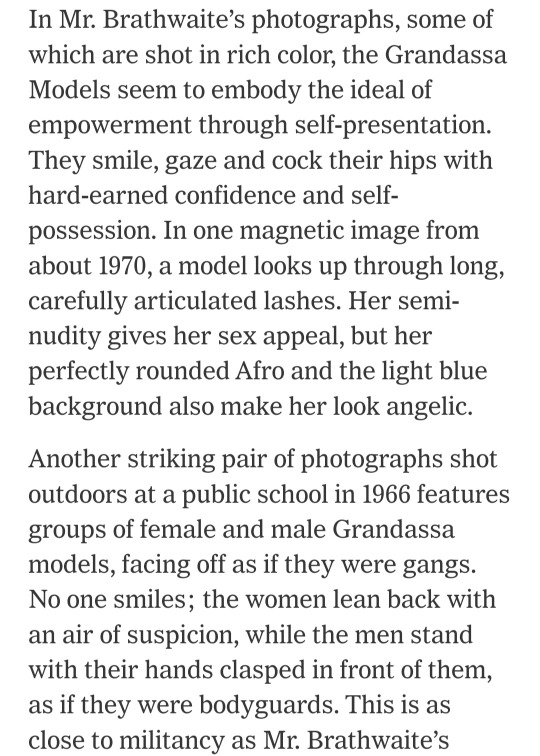



In the 1950's, Lincoln was a cabaret singer whose cameo in a 1955 Jayne Mansfield film propelled her into the spotlight - in the film, Lincoln wore an iconic red dress originally worn by Marilyn Monroe in the movie Gentlemen Prefer Blondes. By the late 50's, Hollywood's desire to mold Lincoln into a siren starlet was at odds with the singer's own desire to embrace her natural beauty. During a time when studios ascribed to Eurocentric aesthetics, Lincoln's choice to wear a short Afro ran counter to the straight-haired, fair-skinned, prototypical femme fatale. In Black is Beautiful, Brathwaite's photos of the singer capture Lincoln's pivot from acting to jazz and her embrace of her natural, coily hair. The singer eventually married Max Roach, and in a symbolic shedding of her former image, Lincoln burned the Marilyn Monroe dress in an incinierator.
#kwame brathwaite#article#photography#pan africanism#black is beautiful#history#american history#abbey lincoln#grandassa models#the grandassa models#jazz#elombe brath#marcus garvey#carolee prince
24 notes
·
View notes
Link
Now through January 15th, 2023, the New York Historical Society is running a photographic show on Kwame Brathwaite who was active in the 1950s and 1960s. This show has both studio portraits and some images of the Grandassa Models who appeared in fashion shows at Harlem’s Apollo Theater.
#black is beautiful#harlem#kwame brathwaite#1960s fashions#1960s#grandassa models#fashion history#costume history#dress history#studio portraiture
10 notes
·
View notes
Text
Yemi Bamiro To Direct Kwame Brathwaite Doc ‘Black Is Beautiful’ For Wayfarer, Misfits Entertainment
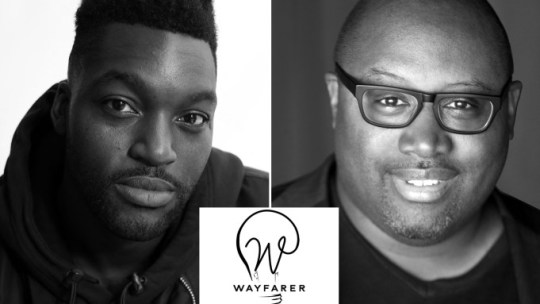
EXCLUSIVE: Yemi Bamiro (Fight the Power) has been set to direct Black Is Beautiful: The Kwame Brathwaite Story, a documentary spotlighting the life and work of activist, cultural icon, and renowned photojournalist Kwame Brathwaite, which Wayfarer Studios (Ezra, It Ends With Us) is developing in partnership with Misfits Entertainment (McQueen, Rising Phoenix), The Creative Coalition, and The Kwame Brathwaite Archive.
A celebration of Black history, art, and culture, the film will chart Brathwaite’s rise to a position of huge influence against the backdrop of the second Harlem Renaissance, the Civil Rights Movement, and the evolution of modern art. A trailblazer and founding father of the “Black is Beautiful” movement, Brathwaite is perhaps best known for co-creating Grandassa Models, a group of Black female models that promoted African-inspired fashion and beauty ideals, aiming to foster a shift away from from the more traditional Eurocentric standard by highlighting a more cosmopolitan look and feel. The movement was documented through Brathwaite’s photographs of gatherings which included music, poetry readings, plays, and art in its various forms. With Grandassa Models, he was able to create an authentic and unfiltered environment where people could be themselves and embrace their natural beauty, and to this day, the group meets weekly.
Related Stories
Brathwaite’s work appeared in publications including Vogue, The New Yorker, The New York Times, Essence, Blues and Soul, New York Post, New York Magazine, and National Geographic. Over the course of his career spanning more than six decades, he snapped shots of everyone from Mohammed Ali and The Jackson 5 to Nelson Mandela and Grace Jones, while giving equal focus to ordinary individuals.
In utilizing his photographic medium to spotlight the convergence of fashion, activism, music, and art on a global scale, Brathwaite captured spectacular moments in history, both big and small. His quintessential contribution to the Black aesthetic continues to inspire the next generation of photographers, celebrities and artists across all mediums, messaging, and brands.
Helping the Black Is Beautiful filmmakers in their mission of celebrating the unique life and talents of Brathwaite is the massive archive of never-before-seen materials that they were able to access through the creative’s estate. Wayfarer Studios co-founder Steve Sarowitz will exec produce the doc alongside Misfits Entertainment’s co-founder and co-owner, Andee Ryder. Producers on the pic include Wayfarer’s Justin Baldoni and Andrew Calof, Misfits Entertainment’s Ian Bonhôte and Lizzie Gillett, Robin Bronk for The Creative Coalition, and Kwame S Brathwaite on behalf of The Kwame Brathwaite Archive.
Brathwaite’s son, Kwame S. Brathwaite, shared that the process of archiving his father’s “writing, ephemera and iconic photography” has been taking place over the last few years. “We are truly excited,” he said, “about this opportunity to provide an in-depth look at the breadth and historical significance of his work.”
Bamiro stated that he came to the project as “a huge fan” of Brathwaite’s work. “To have the opportunity to shine a light on the life, work, activism and influence of such a legendary figure is a privilege,” he said.
Offered Wayfarer Studios’ President of Production and Development, Calof, “The world hasn’t heard enough about this incredibly crucial man who has influenced the Black aesthetic since the 1960’s. Images which showcased the persecution of Black people deeply impacted Kwame and as a photographer, he was compelled to change the focus and provide positive narrative to this time.”
Calof went on to emphasize that Brathwaite was “devoted to spotlighting the love, hope and beauty present within the underground movement of Black culture and he was driven to bring this into the mainstream. This greatness has resulted in tremendous impact on generations since.”
Bamiro most recently directed Fight the Power: How Hip Hop Changed the World, a PBS docuseries chronicling the birth and evolution of hip-hop, which features talents like Chuck D, Ice-T, and Run DMC. He also directed the doc One Man and His Shoes on the “social, cultural and racial significance” of Air Jordan sneakers, as well as Reggae Fever: David Rodigan, a feature doc spotlighting the career of the same-name British DJ. Other past projects include Viceland’s Hate Thy Neighbor and Prime Video’s Fever Pitch: The Rise of the Premier League. The filmmaker is repped by Jenny Parker at Mint & Co.
#Kwame Brathwaite#Yemi Bamiro To Direct Kwame Brathwaite Doc ‘Black Is Beautiful’#Black Photographers#Black History Matters#Black Photog#Black Lives Matter
12 notes
·
View notes
Text
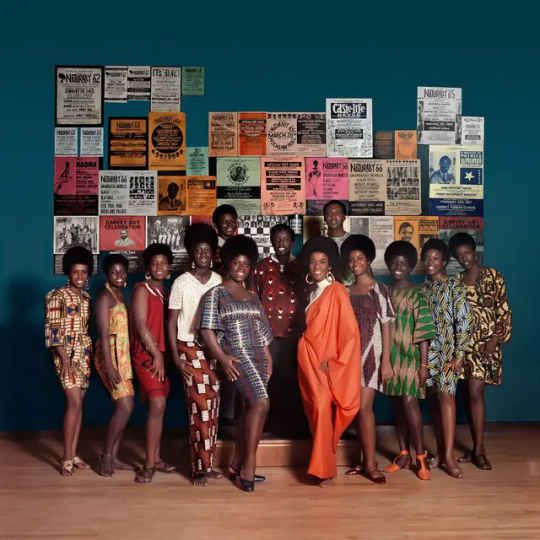
Naturally ’68 photo shoot, featuring Grandassa Models and founding members of the African Jazz Arts Society and Studios.
25 notes
·
View notes
Text
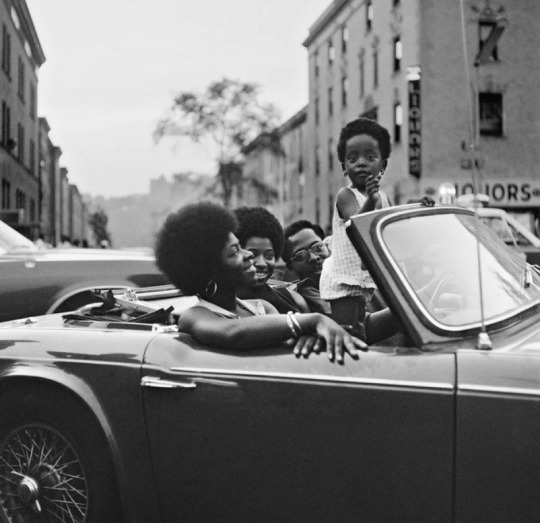
Grandassa models , Harlem , New York , 1968 ph. by Kwame Brathwaite
9 notes
·
View notes
Text
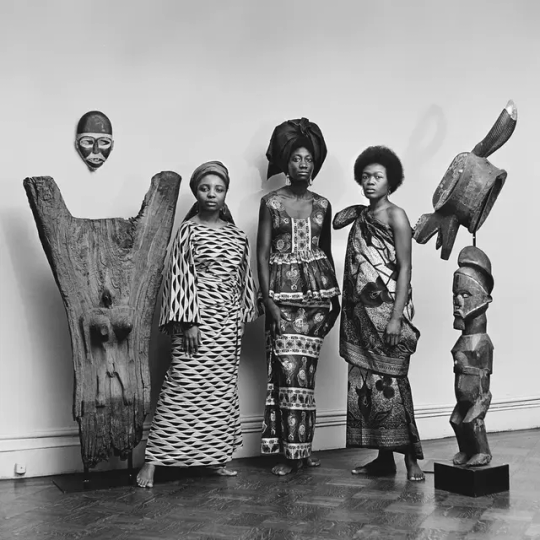
Grandassa Models at the Merton Simpson Gallery, New York, circa 1967. From "Kwame Brathwaite: Black Is Beautiful" (Aperture, 2019).
3 notes
·
View notes
Link





Sexypink - Rest in Power Kwame Braithwaite - Making BLACK LIVES MATTER long before the slogan existed.
#Sexypink/A Legend#sexypink/bereavement#sexypink/Kwame Braithwaite#sexypink/Black is Beautiful#sexypink/Barbadian parentage#tumblr/Photography#tumblr/Icon Kwame Braithwaite#tumblr/bereavement#Black Lives Matter#Black is Beautiful#blackness#beauty#self awareness#Kwame Braithwaite
4 notes
·
View notes
Text
Kwanzaa Umoja 2022-23
December 26, 2022 is the first day of Kwanzaa, also known as Umoja which represents the black candle. It is lit first to remind us about the bloodshed and strength of our ancestors. It is also an important reminder to strive together as a family, community, and race. This is how our ancestors were able to build kingdoms and maintain civilizations by sticking together and understanding that we need each other in order to strive as one.
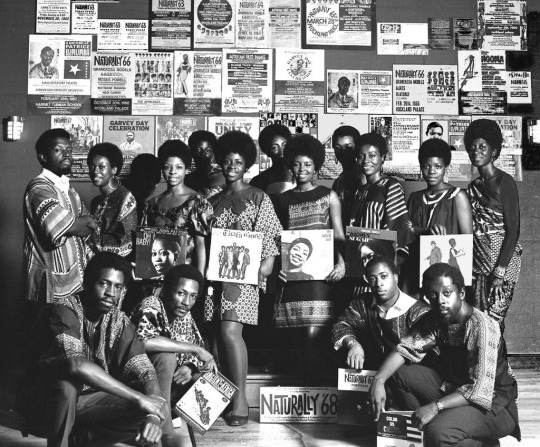
Models from the Grandassa Models agency in 1968, part of the “Black Power!” exhibition at the Schomburg Center for Research in Black Culture. Credit...Kwame Brathwaite
Umoja Experience
Recently, as I was driving home, the car suddenly began to shake and the inside of my heart spiraled in confusion. "What do I do?" I asked myself. After a few moments of contemplating, something inside of my spirit told me to continue to drive home since it was close. During my journey towards my destination, an older couple asked me if I needed help and informed me that the car suffered a shredded tire. As soon as I arrived in front of my home, a plethora of my neighbors appeared next to the car and asked me if I needed any assistance. I grew overwhelmed by the amount of neighbors that stood beside me, then I realized this situation was a symbol of Umoja.
Umoja Activities Part 1
Today is a great day to put yourself in your community. You could attend Kwanzaa events, meet up with a friend, or even go downtown to get a cup of coffee but make sure that you are communicating with others. When we have flowing conversations with people, we are able to recharge our energies and learn new wisdoms. It is important to remain humble because life is about being a student and teacher so it is essential to listen. If you decide to remain in your home then find a way to connect online with others or call a family member.
Symbolization Introduction:
This world is usually depicted as a physical world, but that is only a small portion of what life actually is. Which brings us to a lesson that our ancestors would have proudly taught us which is to embrace both the physical and spiritual realms. You use spirituality all day long: praying, having a dream, feeling someone's vibe, etc. But the modern agenda is to take you faraway from that power so you will only embrace the physical world. If you need more help to understand what the spiritual realm is then read Entering the Spiritual Realm, African vs. Western Spirituality, and How to Strengthen Your Spirituality.
God, the universe, angels, and/or your ancestors are always trying to assist you, but it will not always be through physical speech. Sometimes these symbols will be sent to you by dreams, intuition, or symbols. It is a must that you are open-minded in everything that you do. Your mind has programs that have been normalized with repetition, thankfully you can change those programs at any time.
Let's say that you arrived late for a job interview which led you to instantly get denied, so you sit outside and mask your emotions with depressed energies, and shout, "why me?" All of a sudden, a raven flies by you and lands next to your feet. You look at the raven without emotion then proceed to grab your cell phone to complain about your disappointing experience. Depending on your upbringing, you might think that most things "black" are bad like a black bird or black cat, but why is that? Perhaps to push the narrative that black is bad? Anyhow, everything holds a positive representation, even animals. Ravens represent wisdom, transformation, and change. The reason why the raven gathered your attention was because it is was a message from your higher being to change your negative mindset and that rejection was protection. But without knowing what a raven means or any animal then you would have missed the powerful message.
—
More Posts
Black & African Excellence Master List
Spirituality Master List
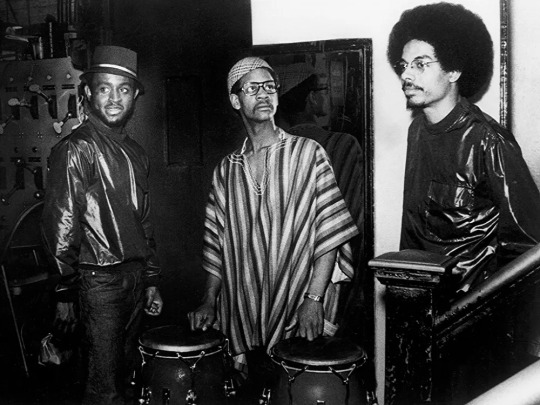
The Last Poets are several groups of poets and musicians who arose from the late 1960s African-American civil rights movement's black nationalism. (Wikipedia definition.) The original members: Felipe Luciano, Gylan Kain, and David Nelson
#to read#happy kwanzaa#kwanzaa#kwanzaa 2022#umoja#nguzo saba#black spirituality#happy kwanza#african spirituality#black woman shit#black woman writer#african#black tumblr#black writing#black unity#natural hair#spiritualjourney#blackgirlbloggers#locs#happykwanzaa#blackholidays#freeform locs#kwanzaar#spiritual guide#blackgirlmagic#spirituality#black stories#black artist#black poets on tumblr#black power
6 notes
·
View notes
Text
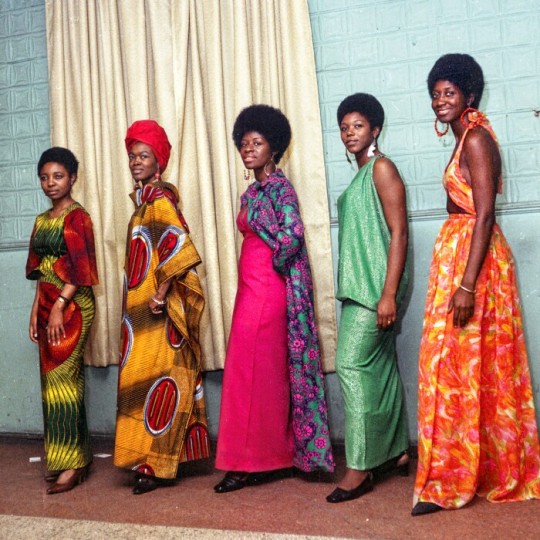
Grandassa models photographed by Kwame Brathwaite, 1966
60 notes
·
View notes
Text
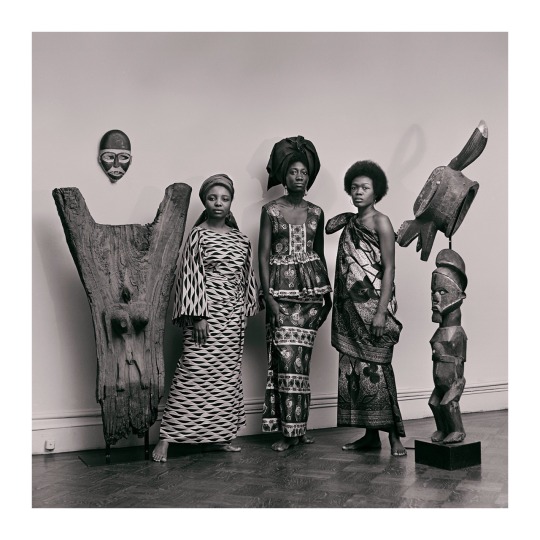
ARTIST Kwame Brathwaite (born Brooklyn, New York, 1938)
TITLE Untitled (Grandassa Models, Merton Simpson Gallery)
CREATION DATE c. 1967
MATERIALS archival pigment print
Tang Museum
24 notes
·
View notes
Photo
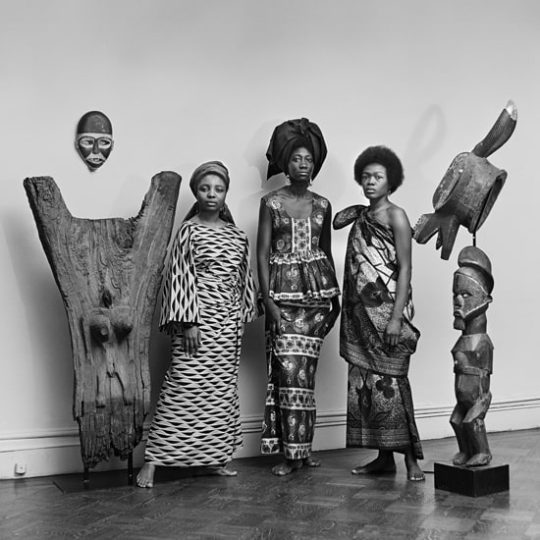
Kwame Brathwaite, Untitled (Grandassa Models, Merton Simpson Gallery), 1967, Archival pigment print, 30 x 30 inches
58 notes
·
View notes
Photo
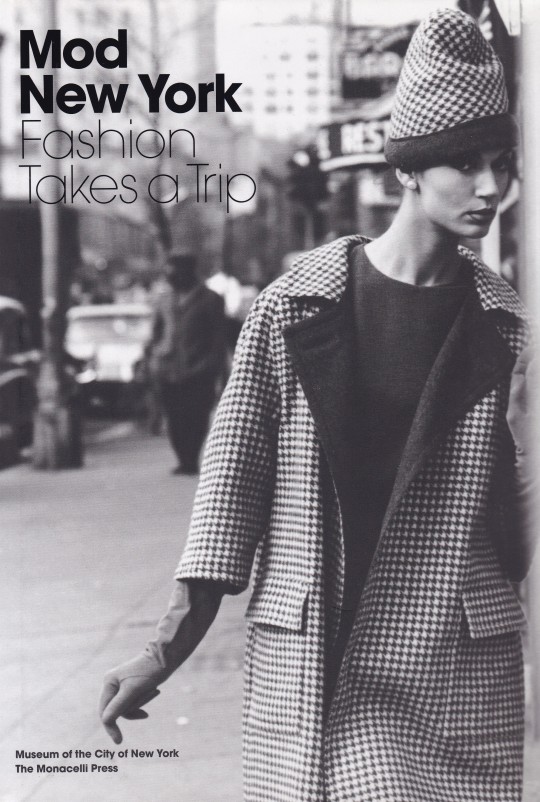


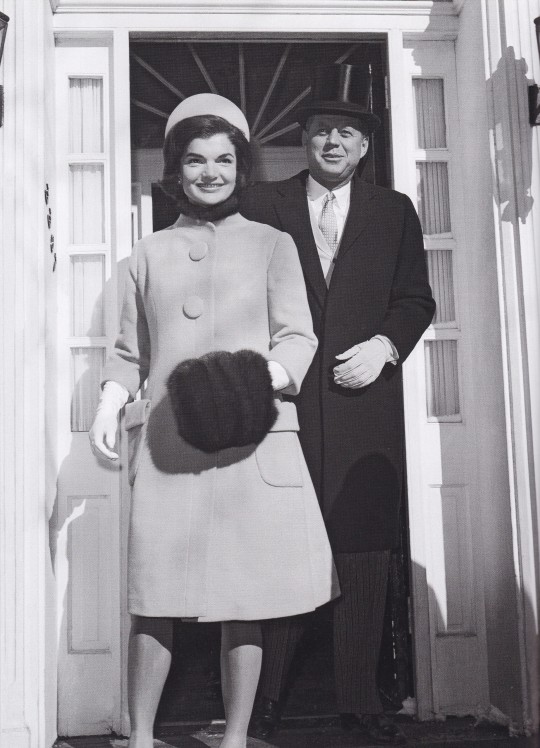
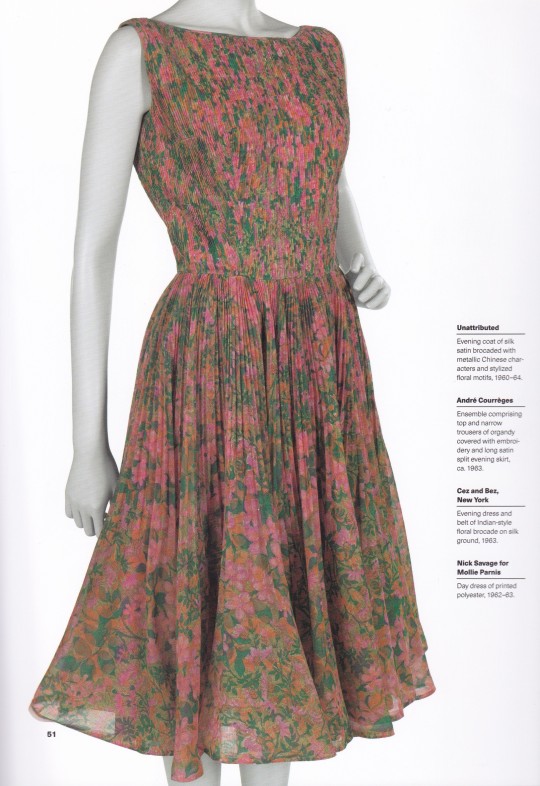
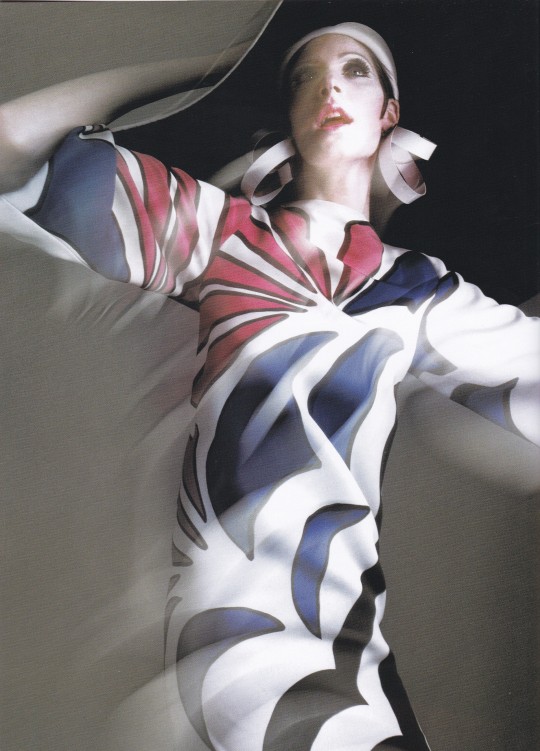

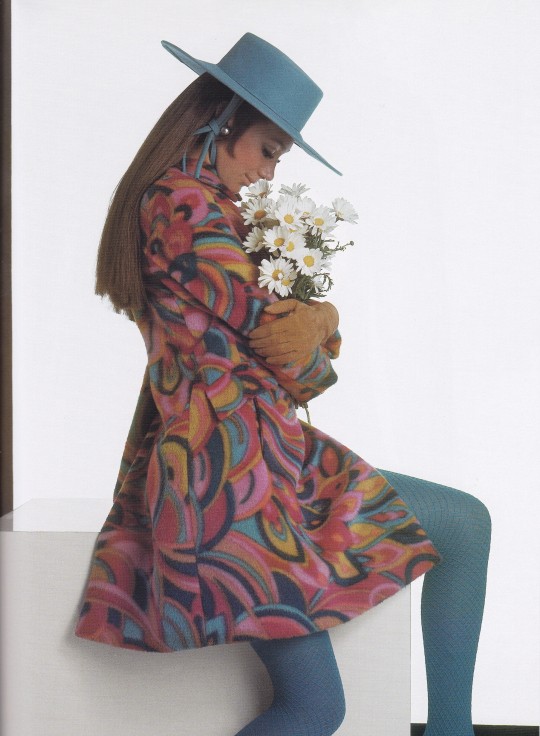
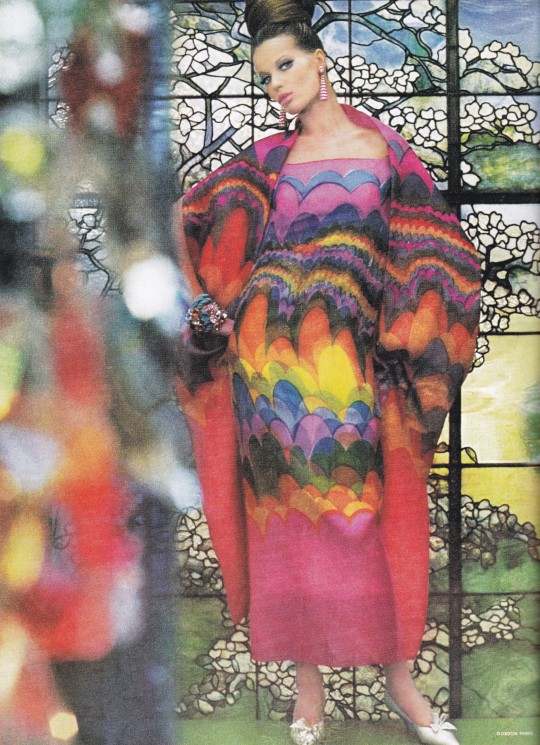
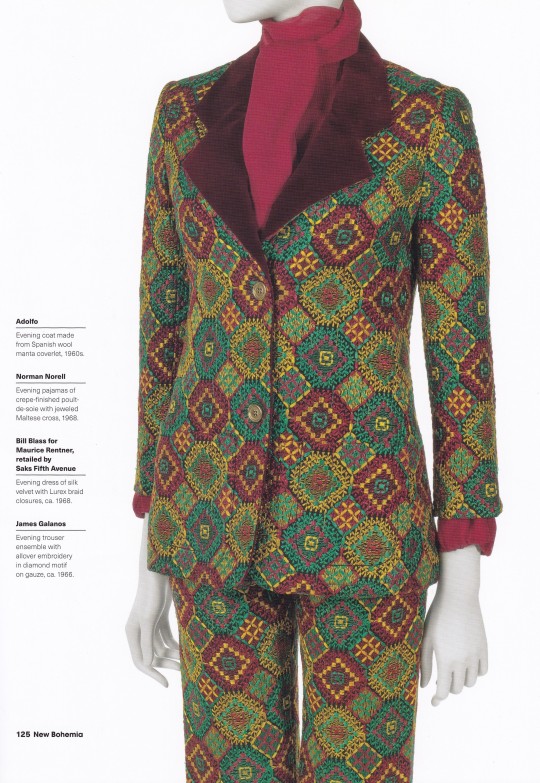
Mod New York
Fashion Takes a Trip
Donald Albrecht , Phyllis Magidson
Museum of the City of New York / The Monacelli Press, New York 2017, 164 pages, ISBN 978-1580934985
euro 49,00
email if you want to buy [email protected]
Mod New York traces the fashion arc of the 1960s and 1970s, a tumultuous and innovative era that continues to inspire how we dress today. During this period, demure silhouettes and pastels favored by First Lady Jacqueline Kennedy exploded into bold prints and tie-dyed psychedelic chaos and ultimately resolved into a personal style dubbed by Vogue the “New Nonchalance.”
Accompanying a major exhibition at the Museum of the City of New York, this book is beautifully illustrated by two hundred groundbreaking and historically significant designs by Halston, Geoffrey Beene, Rudi Gernreich, Yves Saint Laurent, André Courrèges, Norman Norell, and Bill Blass, among many others, all drawn from the renowned costume collection at MCNY.
By the mid-1960s, clothing assumed communicative powers, reflecting the momentous societal changes of the day: the emergence of a counterculture, the women’s liberation movement, the rise of African-American consciousness, and the radicalism arising from the protests of the Vietnam War. New York City, as the nation’s fashion and creative capital, became the critical flashpoint for these debates. Authoritative essays by well-known fashion historians Phyllis Magidson, Hazel Clark, Sarah Gordon, and Caroline Rennolds Milbank explore the ways in which these radical movements were expressed in fashion. Of special note is Kwame S. Brathwaite’s presentation of the Grandassa Models and “Black is Beautiful” movement, which is illustrated with photographs by his father, Kwame Brathwaite.
04/09/20
orders to: [email protected]
ordini a: [email protected]
twitter:@fashionbooksmi
instagram: fashionbooksmilano, designbooksmilano tumblr: fashionbooksmilano, designbooksmilano
#Mod New York#fashion exhibition catalogue#sixties#seventies#New Nonchalance#Halston#Geoffrey Beene#Rudi Gernreich#courrèges#Norman Norell#Bill Blass#Yves Saint Laurent#tie-dyed psychedelic#Jacqueline Kennedy#Marisa Berenson#fashion history#fashion inspirations#fashion books#fashionbooksmilano
6 notes
·
View notes
Photo
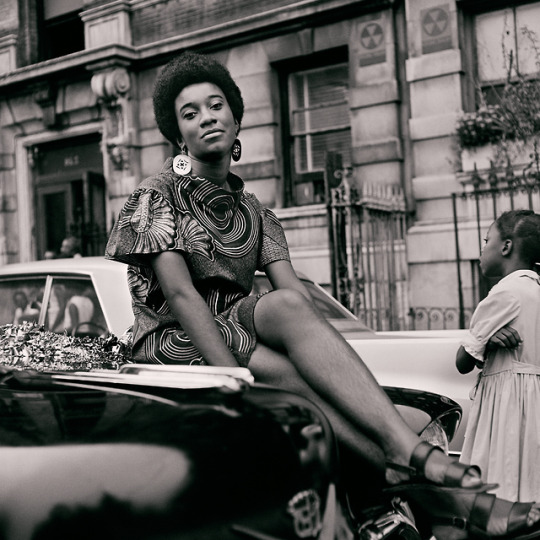
Grandassa model Pat Bardonelle during the Garvey Day Parade, Kwame Brathwaite, August 17, 1968
#fashion#vintage fashion#vintage#photography#vintage photography#kwame brathwaite#1960s#1960s fashion#1960s photography#pat bardonelle#black and white photography#black artists#american#african american#100 notes
284 notes
·
View notes
Text
Blanton Museum #edisonmariotti exposições dos artistas Kwame Braithwaite e Suzanne Bocanegra @blantonmuseum - exhibitions by artists Kwame Braithwaite and Suzanne Bocanegra. JUNE 27 - SEPTEMBER 19, 2021 Major Exhibition - Kwame Brathwaite: Black Is Beautiful JUNE 27 - SEPTEMBER 19, 2021
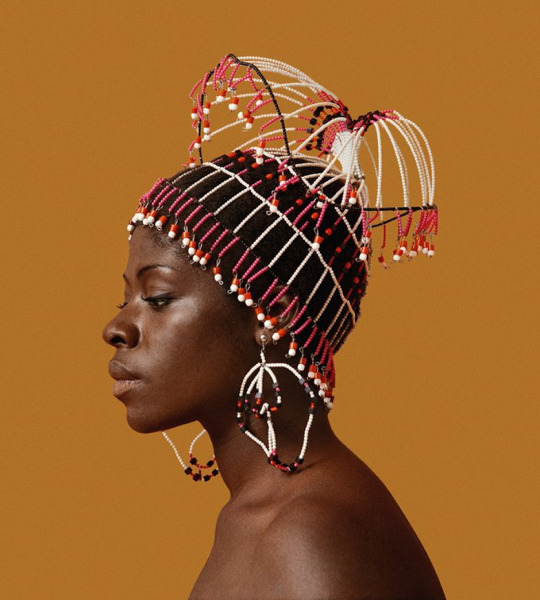
In the late 1950s and throughout the 1960s, Kwame Brathwaite (born Brooklyn, New York, 1938) used photography to popularize the political slogan “Black Is Beautiful.” This exhibition—the first ever dedicated to Brathwaite’s remarkable career—tells the story of a key figure of the second Harlem Renaissance. Inspired by the writings of activist and Black nationalist Marcus Garvey, Brathwaite, along with his older brother, Elombe Brath, founded the African Jazz Arts Society and Studios (AJASS) and the Grandassa Models. AJASS was a collective of artists, playwrights, designers, and dancers. Grandassa Models—the subject of much of this show’s contents—was a modeling agency for Black women, founded to challenge white beauty standards. From stunning studio portraits to behind-the-scenes images of Harlem’s artistic community, including Max Roach and Abbey Lincoln, this show offers a long-overdue exploration of Brathwaite’s life and work.
Credits
This exhibition is organized by Aperture, New York and Kwame S. Brathwaite.
Funding for the exhibition Black Is Beautiful: The Photography of Kwame Brathwaite and the accompanying Aperture publication are made possible, in part, by generous support from the National Endowment for the Arts and the Photographic Arts Council Los Angeles.
The Blanton’s presentation is organized by Claire Howard, Assistant Curator, Modern and Contemporary Art.
Kwame Brathwaite, Sikolo Brathwaite wearing a headpiece designed by Carolee Prince, African Jazz-Art Society & Studios (AJASS), Harlem, circa 1968 (detail); from Kwame Brathwaite: Black Is Beautiful (Aperture, 2019), Courtesy the artist and Philip Martin Gallery, Los Angeles
------
No final da década de 1950 e ao longo da década de 1960, Kwame Brathwaite (nascido no Brooklyn, Nova York, 1938) usou a fotografia para popularizar o slogan político "Black Is Beautiful". Esta exposição, a primeira dedicada à notável carreira de Brathwaite, conta a história de uma figura-chave do segundo Renascimento do Harlem. Inspirado pelos escritos do ativista e nacionalista negro Marcus Garvey, Brathwaite, junto com seu irmão mais velho, Elombe Brath, fundou a Sociedade e Estúdios de Arte do Jazz Africano (AJASS) e os Modelos Grandassa. AJASS era um coletivo de artistas, dramaturgos, designers e dançarinos. Grandassa Models - o assunto de grande parte do conteúdo deste programa - era uma agência de modelos para mulheres negras, fundada para desafiar os padrões de beleza branca. De impressionantes retratos de estúdio a imagens de bastidores da comunidade artística do Harlem, incluindo Max Roach e Abbey Lincoln, este show oferece uma exploração há muito esperada da vida e obra de Brathwaite.
Créditos
Esta exposição é organizada por Aperture, New York e Kwame S. Brathwaite.
O financiamento da exposição Black Is Beautiful: The Photography of Kwame Brathwaite e a publicação Aperture que a acompanha são possíveis, em parte, pelo generoso apoio do National Endowment for the Arts e do Photographic Arts Council de Los Angeles.
A apresentação do Blanton é organizada por Claire Howard, Curadora Assistente de Arte Moderna e Contemporânea.
Kwame Brathwaite, Sikolo Brathwaite usando um capacete desenhado por Carolee Prince, African Jazz-Art Society & Studios (AJASS), Harlem, circa 1968 (detalhe); de Kwame Brathwaite: Black Is Beautiful (Aperture, 2019), cortesia do artista e Galeria Philip Martin, Los Angeles
1 note
·
View note
Photo


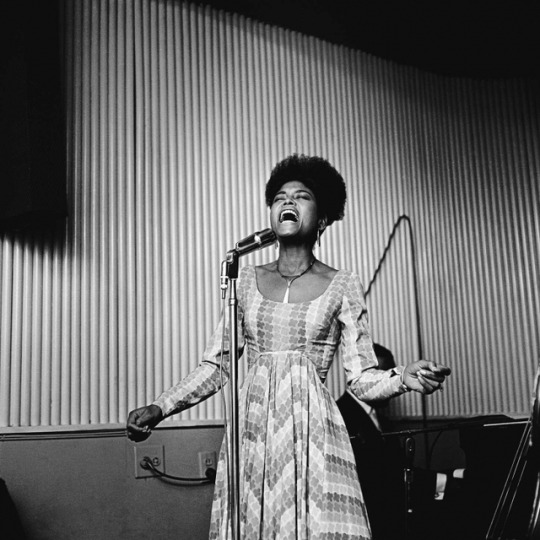
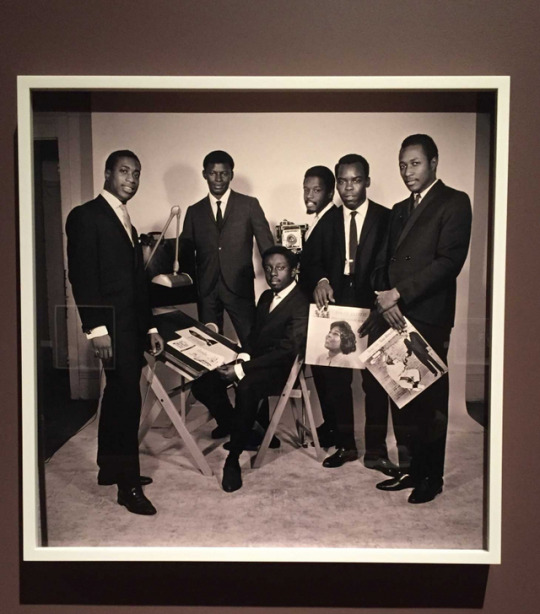
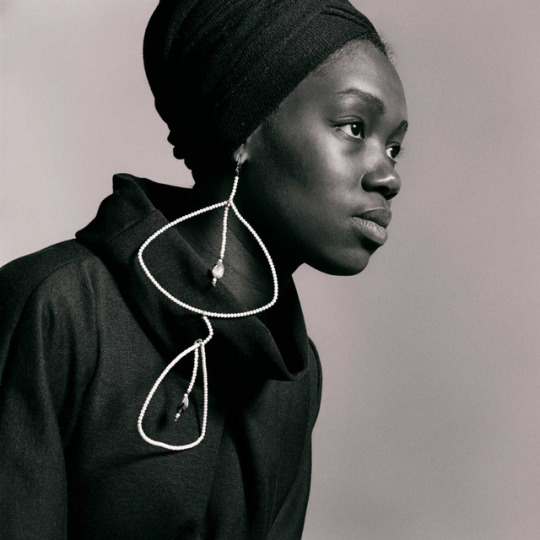
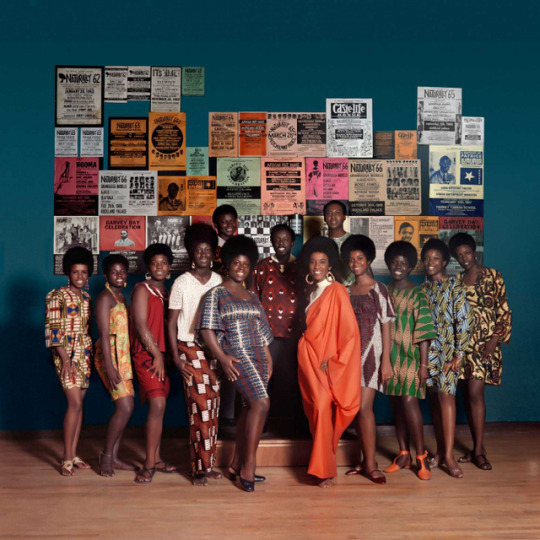
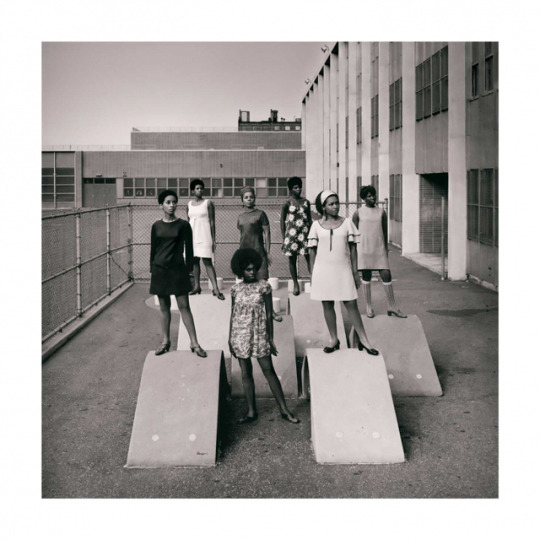
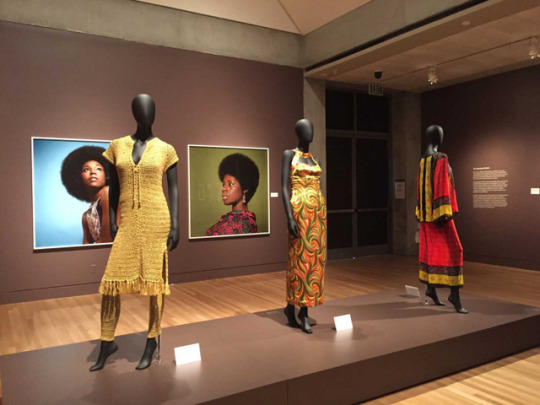
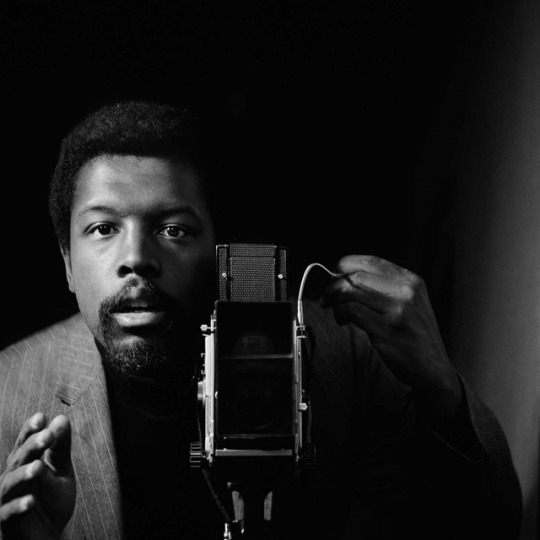
#HyperAllergic || How Photography and Jazz Merged to Forge the “Black Is Beautiful” Movement
Kwame Brathwaite’s photographs fused the two mediums to push the boundaries of beauty, transforming how we define Blackness.
Black is Beautiful: The Photography of Kwame Brathwaite is on view at the Skirball Cultural Center (2701 N Sepulveda Blvd, Los Angeles, CA 90049) through September 1. The exhibition was curated by Skirball managing curator Bethany Montagno; Aperture Foundation’s Michael Famighetti; and Kwame Brathwaite’s son, Kwame S. Brathwaite. The exhibition will travel to the Museum of the African Diaspora in San Francisco and Columbia Museum of Art in South Carolina in late 2019 and 2020. (HyperAllergic.com)
#hyper allergic#photography#jazz#black is beautiful#black movement#kwame brathwaite#skirball cultural center#bethany montagno#aperture foundation#michael famighetti#museum of the african diaspora#san francisco#columbia museum of art#south carolina#blackwomen#black beauty#black history#black musical history#women of color#shades of beauty#beautyintheblackness#black art#artistic#artistry#black excellence#black exceptionalism#blackmanonyx#black men#black people
70 notes
·
View notes
Photo
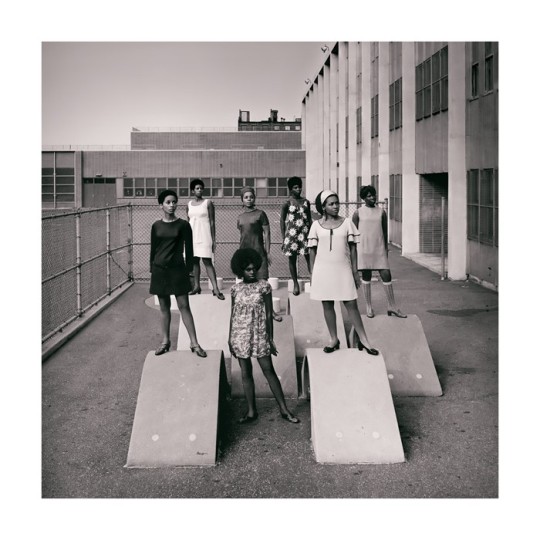
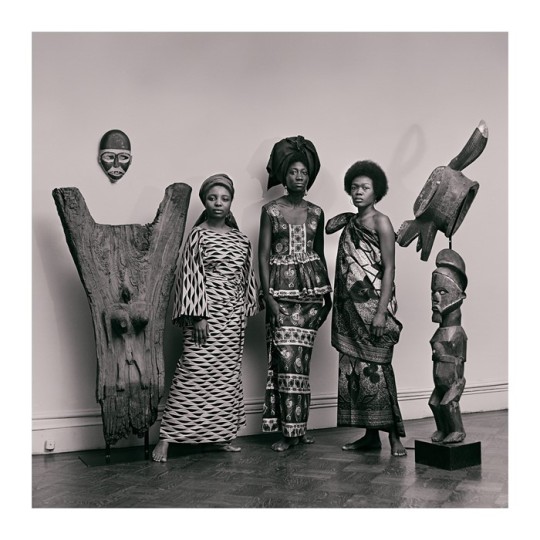
“KWAME BRATHWAITE: BLACK IS BEAUTIFUL” NOW ON VIEW AT THE SUNDANCE FILM FESTIVAL
Miss Rosen for AnOther
On the evening of January 28, 1962, a massive crowd gathered outside Harlem’s Purple Manor, eager to gain entrance to Naturally 62 – the landmark event that introduced the ‘Black is Beautiful’ movement to the world.
The brainchild of photographer Kwame Brathwaite (born in 1938) and his older brother Elombe Brath (now deceased), Naturally 62 presented Blackness in its natural state through a powerful combination of fashion, music, and politics. The brothers, who were born in Brooklyn to a politically active family, had embraced Marcus Garvey’s Back-to-Africa movement and co-founded the African Jazz-Art Society and Studios (AJASS), a collective of artists, writers, musicians, dancers, and fashion designers. “Our mission was to reach the folks so that they could see their own work,” Brathwaite reveals. “It was a time when people were trying to organize and improve the community, to get themselves in order so that they would not be the low man on the totem pole.”
The brothers worked on two fronts, supporting the African independence movement while embracing Black business at home, producing jazz concerts at legendary locales including Club 845 in the Bronx and Small’s Paradise in Harlem. But it was a local beauty contest that gave the brothers the inspiration for Naturally 62. A year earlier, while attending the annual Marcus Garvey Day Celebration, they watched ‘The Miss Natural Standard of Beauty Contest’, wherein models came to the stage without make-up, their hair free from heat press.
Read the Full Story at AnOther
Top: Untitled (Photo shoot at a school for one of the many modeling groups who had begun to embrace natural hairstyles in the 1960s) c. 1966, printed 2017. Photography by Kwame Brathwaite, Image courtesy the artist and Cherry and Martin, Los Angeles
Bottom: Untitled (Grandassa Models, Merton Simpson Gallery) c. 1967, printed 2017. Photography by Kwame Brathwaite, Image courtesy the artist and Cherry and Martin, Los Angeles
2 notes
·
View notes